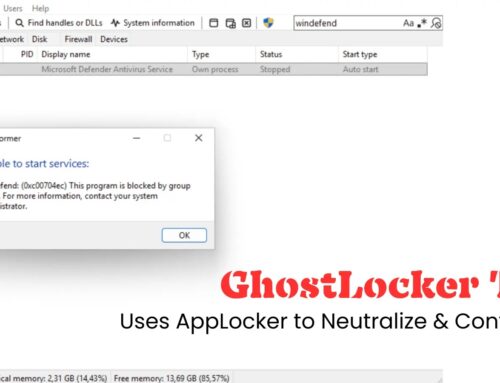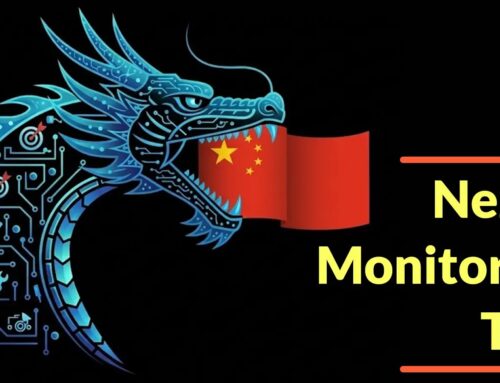
Swedish Power Grid Operator Confirms Data Breach Following Everest Ransomware Gang Claim
Sweden’s Critical Infrastructure Under Attack: Svenska kraftnät Confirms Data Breach
The digital defense of critical infrastructure has been breached, sending repercussions across Europe’s cybersecurity landscape. On October 26, 2025, Svenska kraftnät, Sweden’s pivotal electricity transmission system operator, publicly confirmed a significant data breach. This incident follows claims by the notorious Everest ransomware gang, highlighting the escalating threat to essential services and drawing immediate attention from cybersecurity experts and government authorities.
The Breach Unveiled: Svenska kraftnät and the Everest Ransomware Gang
Svenska kraftnät, the backbone of Sweden’s power distribution, acknowledged a security incident that compromised their systems. While specific details regarding the depth and breadth of the breach remain under investigation, the confirmation itself is a stark reminder of the persistent and evolving threats facing critical national infrastructure (CNI). The Everest ransomware gang, known for its aggressive tactics and data exfiltration capabilities, has claimed responsibility, adding another layer of complexity to the incident.
Ransomware attacks on CNI are particularly concerning due to their potential to disrupt essential services, leading to widespread societal and economic impact. This event underscores the need for robust cybersecurity postures, not just within individual organizations but across entire national grids.
Immediate Reactions and Governmental Scrutiny
The confirmation of the breach has triggered immediate responses from cybersecurity entities and governmental bodies. Given Svenska kraftnät’s crucial role in managing Sweden’s power supply, the implications extend beyond mere data loss. Investigations are likely focusing on the nature of the compromised data, potential operational impacts, and the methods used by the Everest gang to infiltrate such a highly secured network.
Governments worldwide are increasingly recognizing the strategic importance of CNI protection. This incident will undoubtedly lead to heightened scrutiny of cybersecurity protocols within similar organizations across the European Union and beyond, potentially influencing future policy and investment in defensive technologies.
Understanding the Threat: The Everest Ransomware Gang
The Everest ransomware group operates a Ransomware-as-a-Service (RaaS) model and is known for its double extortion tactics, meaning they not only encrypt data but also exfiltrate it for public release if the ransom is not paid. Their activities frequently target high-value organizations, making them a significant threat actor in the cybercriminal landscape. Their tactics often involve exploiting vulnerabilities in publicly facing applications, phishing campaigns, and lateral movement within compromised networks.
Remediation Actions and Proactive Defense Strategies
For organizations, especially those in critical infrastructure sectors, learning from incidents like the Svenska kraftnät breach is paramount. Immediate and sustained remediation efforts are crucial.
- Incident Response Plan Activation: Swiftly activate and execute a pre-defined incident response plan, isolating affected systems to prevent further compromise.
- Forensic Investigation: Conduct a thorough forensic analysis to determine the root cause, extent of data exfiltration, and methods used by the attackers.
- Patch Management: Proactively and consistently apply security patches and updates to all systems, prioritizing critical vulnerabilities. For example, addressing vulnerabilities like CVE-2023-34048 in VMware vCenter Server or CVE-2023-46805 and CVE-2024-21887 in Ivanti products, which are often exploited by ransomware groups.
- Multi-Factor Authentication (MFA): Implement strong MFA across all systems and services to dramatically reduce the risk of unauthorized access.
- Network Segmentation: Segment critical networks to contain potential breaches and limit lateral movement by attackers.
- Data Backups: Maintain immutable, offline backups of all critical data, regularly tested for restorability.
- Employee Training: Regularly train employees on cybersecurity best practices, including phishing awareness and recognizing social engineering attempts.
- Threat Intelligence: Subscribe to and act upon relevant threat intelligence feeds to stay informed about emerging threats and attacker tactics, techniques, and procedures (TTPs).
Monitoring and Mitigation Tools
Effective cybersecurity relies on a combination of robust processes and reliable tools. For organizations looking to enhance their defenses against sophisticated threats like those posed by the Everest gang, the following tools are invaluable:
| Tool Name | Purpose | Link |
|---|---|---|
| SIEM (Security Information and Event Management) | Aggregates and analyzes security events across an organization’s IT infrastructure for real-time threat detection and compliance reporting. | N/A (Vendor-specific: Splunk, IBM QRadar, etc.) |
| EDR (Endpoint Detection and Response) | Monitors end-user devices for malicious activity, providing visibility into threats and enabling rapid response. | N/A (Vendor-specific: CrowdStrike Falcon, SentinelOne, etc.) |
| Vulnerability Scanners | Identifies security weaknesses in systems and applications, allowing for proactive patching and remediation. | Tenable Nessus |
| Network Intrusion Detection/Prevention Systems (NIDS/NIPS) | Monitors network traffic for suspicious activity and can block attacks in real-time. | Snort (IDS) |
| Threat Intelligence Platforms (TIP) | Collects and analyzes threat data from various sources to provide actionable intelligence for defensive measures. | N/A (Vendor-specific: Anomali, Recorded Future, etc.) |
Conclusion
The data breach at Svenska kraftnät serves as a critical wake-up call regarding the persistent danger to essential infrastructure networks. As cybercriminals continue to evolve their tactics, the onus is on organizations and governments to build resilient cyber defenses, foster international cooperation, and prioritize proactive security measures. The battle for digital sovereignty extends to the stability of our most fundamental services, demanding unwavering vigilance and strategic investment in cybersecurity.





